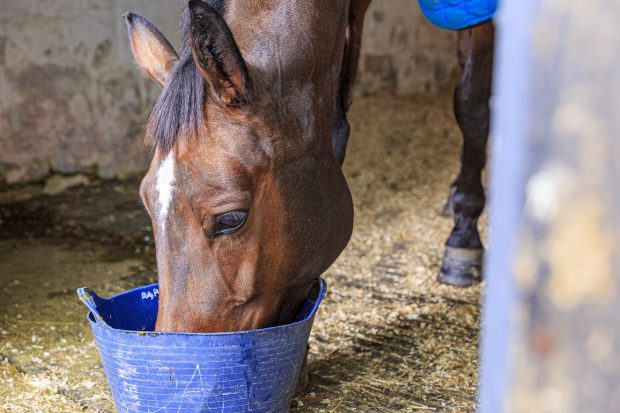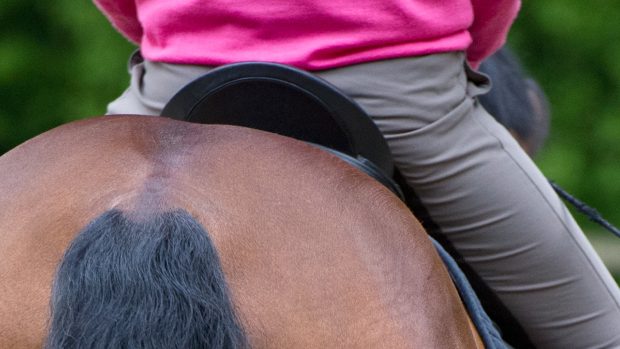This week I would like to start at the end. As we operate within a college environment, we tend to think in academic years as opposed to calendar ones. Summer is therefore always the time of year when we have to say goodbye to the outgoing crop of students and also to our interns too, who are based with us for a year.
One of these is Kate Lefrancois who has been working with us as graduate assistant over the past year, a role designed to allow Hartpury Masters students work alongside their studies.
Kate has not only conquered the quite incredible feat of completing a two-year MSc course in a single year, but also worked to become a huge asset to our team since she moved over from Canada to join us. She will greatly missed by everyone.
We had a nice official end to Kate’s year here in the form of Hartpury’s Summer Fair (6 June), during which we had the most amazing haul of volunteers involved to make the day go as planned (pictured top).
Every year we seem to accumulate greater numbers of work experience students within our ranks, and in a wider society where young people often get a bad rap, our acolytes are definitely bucking the trend.
Our regular student volunteers were joined on the day by my boss’ two sons, Max and Eddie, who were on hand for all manner of things. They finished their shift by getting the chance to help Grace – one of our canine hydrotherapists – swim my dog. Essentially this meant a bit of instruction, and then them racing Damson up and down the pool! The children and the dog were all elated as each other, resulting in a whole load of laughing, splashing and basically two under 10s having had the best time ever.

Ed and Damson hacing a paddle
Feeding matters
Feeding horses who are on a combination of box rest and controlled exercise is one of the greatest challenges we face on a day-to-day basis.
Our in-patients generally come in one of two forms: they are either slightly on the portly side having done quite well during field or stable rest prior to starting work, or they are atrophic and need to build muscle and gain condition.
We have a weighbridge to help monitor the horses; sometimes they appear to be dropping weight by eye but actually they’ve lost it on their tummies and put it on as muscle on elsewhere.
If you can’t get access to a weighbridge, a really useful way of monitoring at home is to take pictures of the horse every couple of weeks, as well as measurements of the thickest point of the neck and around the barrel. You can of course use a weightape, which are pretty accurate for well-proportioned horses but your long-backed tubular varieties can deceive the tape!
I think the most important thing is just that you give yourself something measurable to go by, whichever of these means you chose.
If we do have a good-doer on our hands we follow really simple principles. We weigh their hay and trickle feed it to them throughout the day, and often use treat balls to keep them amused.
Those who are allowed out in the field can go in our bare grass pens, but for horses who are on box rest this is obviously not an option.
The trouble with overweight horses who are carrying an injury is that it can put more strain than desired on the affected structures. Horses with back pain can also be adversely affected by being too hefty — the abdominal muscles need to be tight and strong to allow a horse’s back to remain supple and fully supported.
I very firmly do not believe in starving horses however; it’s not how they are designed to eat and so I’d rather soak the life out of hay just to give them something to chew on than succumb to risk factors such as gastric ulcers.

Weighing a horse
A horse will always look its best when it’s living a normal life in work and going in the field, but while injured, you just have to manage them the best you can.
In some ways horses who need to gain weight are easier to feed, provided they like to eat of course! If they don’t, as anyone who has a fussy horse knows, it can be even more stressful. It can also be difficult to resist the temptation of feeding these types of horses too much too quickly.
We do get horses coming into us who look poor despite their owner’s best efforts because they are out of work and not doing well on it. This type of situation takes time and patience, but you cannot build muscle by feed alone. Our job is to make sure we give the horse enough fuel to build as they progress in their work, but not overcook them. Supplements such as Equitop Myoplast can be really useful in these types of cases, which is for all intents and purposes an equine protein-shake.
Baileys supply our feed and we must consume literally tons of Topline Cubes every year, while Lo-Cal Balancer is really useful for those who need a lower calorie intake but all to still meet all of their daily nutrient requirements. In terms of chaff we range from using alfalfa to a light chaff, and dried grass too. I also feed a lot of unmolassed sugarbeet and soya oil up to amounts of around 60ml per day.
I am fascinated by the whole business of feeding horses and long has rumbled the debate of science vs art when it comes to this subject.
I personally think it is a combination of the two. In the past I’ve worked in places where we only fed straights, with the horses receiving a combination of oats, rolled or naked, broad bran and barley boiled with linseed.
In New Zealand I worked on a stud where it was a case of “one coarse mix fits all”, which was formulated specifically to address the nutrient deficiencies of their land.
Feeding is essentially largely down to preference, economics and situation. On our yard all the horses will have their rations decided on by discussion with their owners and possibly the vet in charge of the case, the latter of which is essential in post-operative cases. The art comes in knowing when to alter things in light of the horse’s daily work or in response to a change in its development or demeanour.
Fizz





